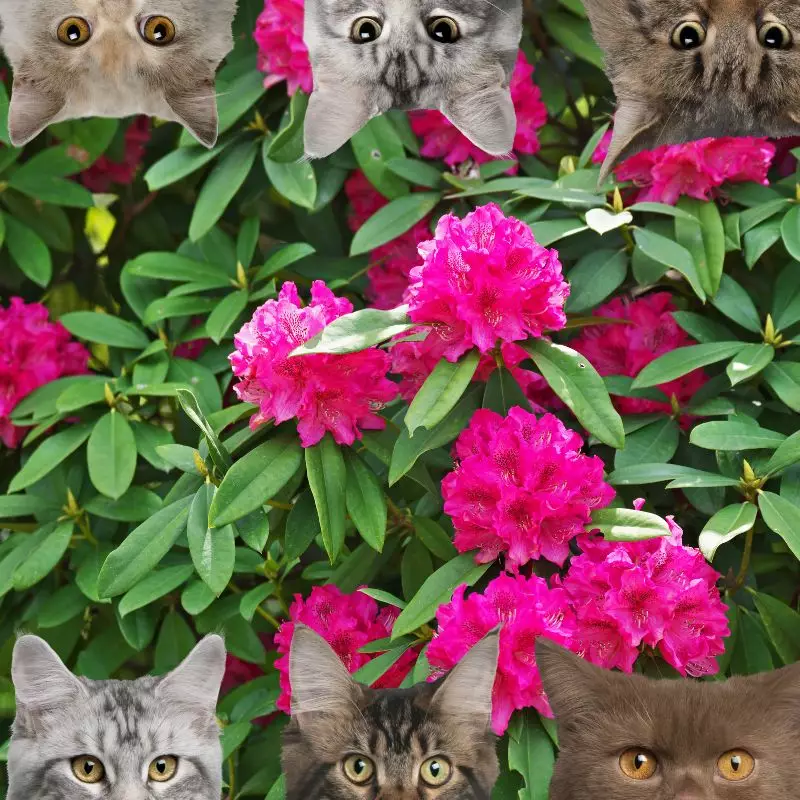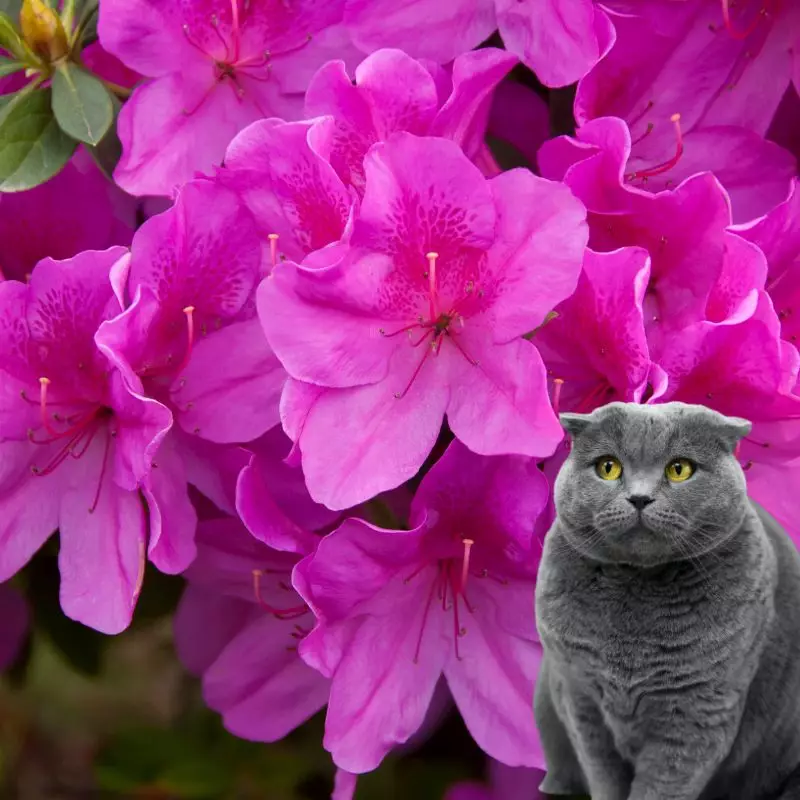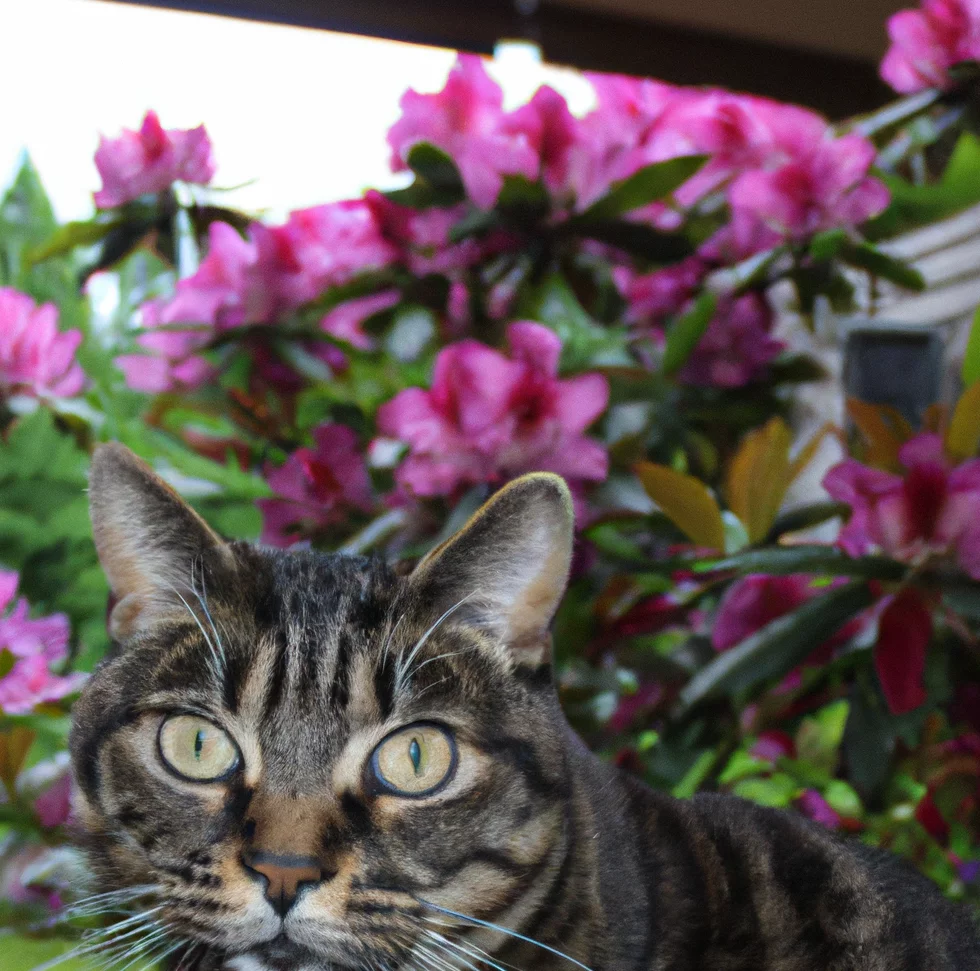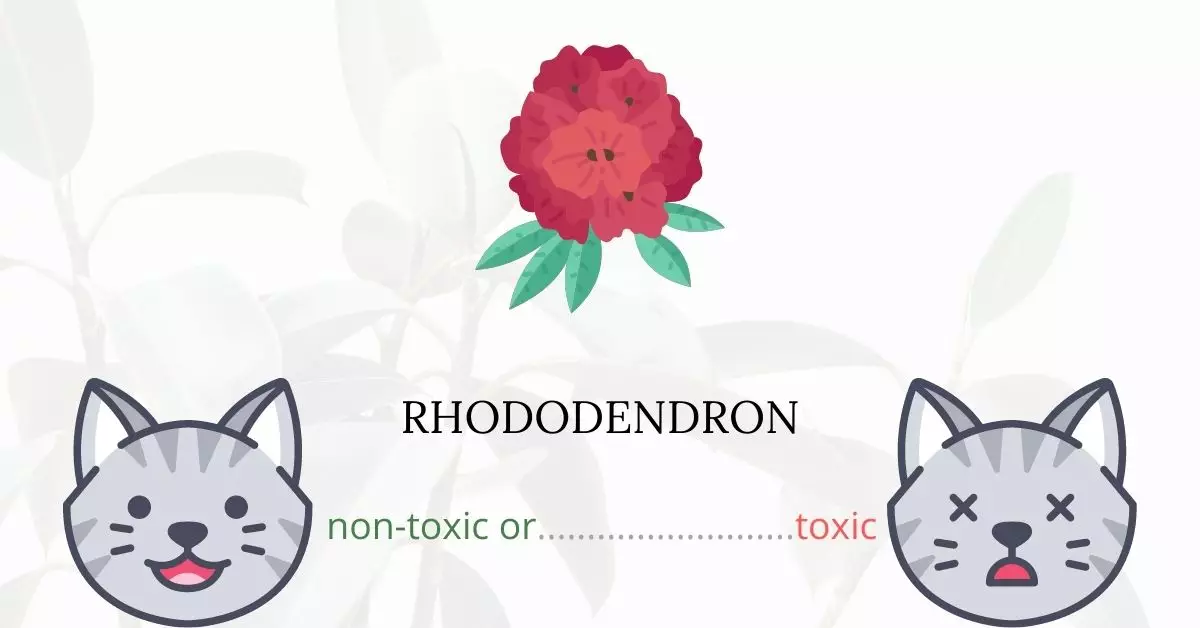Yes, rhododendrons are indeed toxic to cats. Every component of the rhododendron plant is poisonous, and due to the relatively small size of cats, even a small amount can inflict considerable harm. The plant contains toxic resins called grayanotoxins, which are extremely harmful, consisting of water-soluble diterpenoid chemicals that latch onto the cat’s cell membranes, leading to a range of severe health issues including impaired organ and central nervous system function, pneumonia, bleeding, gastrointestinal distress, and potential liver or kidney failure.
This article has been crafted with the expertise and collaboration of a team of experienced Doctors of Veterinary Medicine (DVMs) to provide accurate, reliable, and up-to-date information on the potential risks that various plants, such as rhododendrons, pose to cats. The invaluable insights and knowledge shared by these veterinary professionals empower us to offer detailed and precise information concerning the detrimental effects of these plants on feline companions. Furthermore, to ensure the veracity and comprehensiveness of the information provided, we have referenced high-authority websites, including ASPCA and PetMD, to corroborate every detail concerning plant toxicity. Our collaborative effort aims to heighten awareness and knowledge regarding plant toxicity in pets and foster a safer environment for them.
Clinical Signs of Rhododendron Poisoning in Cats

Upon ingestion, contact, or inhalation of any part of a rhododendron plant, cats may exhibit a range of clinical signs, most of which appear within 6 hours of exposure, necessitating immediate veterinary attention due to their severe and life-threatening nature. Below is an exploration of each clinical sign, the underlying causes, and the potential consequences:
- Nausea and Vomiting: Caused by the irritation of the stomach and intestinal lining due to grayanotoxins, leading to the expulsion of ingested material.
- Diarrhea: Resulting from the irritation and inflammation of the intestinal tract, compromising the absorption of nutrients and water.
- Excessive Drooling: A reaction to nausea and gastrointestinal irritation, indicative of the body’s attempt to eliminate the toxic elements.
- Nasal Discharge: Occurs due to inflammation of the nasal passages, signifying respiratory distress and irritation.
- Loss of Appetite: A manifestation of gastrointestinal distress and discomfort, leading to reluctance in food consumption.
- Dysphagia (Difficulty Swallowing): Arises from the swelling and irritation of the throat, making swallowing painful and strenuous.
- Depression: A behavioral response to systemic toxicity, reflecting the overall physical discomfort and malaise experienced by the cat.
- Weakness: A direct consequence of the body’s exhaustive fight against the toxins, depleting energy reserves.
- Abdominal Pain: Emanates from severe gastrointestinal irritation, signalling internal distress and discomfort.
- Dyspnea (Difficulty Breathing): A sign of respiratory system compromise due to inflammation and possible pneumonia induced by the toxins.
- Lack of Coordination: Results from the impairment of the central nervous system, disrupting normal motor functions.
- Limb Paralysis: An extreme manifestation of neurotoxic effects, rendering the cat unable to move one or more limbs.
- Blindness: A severe and rare symptom indicative of extensive neurological damage affecting the optical nerves.
- Cardiac Abnormalities: Induced by the interference of grayanotoxins with normal heart function, potentially leading to fatal arrhythmias.
- Hypotension (Low Blood Pressure): A consequence of systemic vascular dilation, diminishing blood flow to vital organs.
- Coma: The ultimate stage of systemic collapse due to extensive organ failure and severe neurological damage.
Recognizing any combination of these symptoms as early warning signs of rhododendron poisoning is crucial and warrants immediate medical intervention to prevent irreversible damage and potentially save the cat’s life.
First Aid and Treatment Rhododendron of Poisoning in Cats

Rhododendron poisoning has no specific therapy; thus it will be determined by the severity of the symptoms. Hospitalization and thorough observation of the cat will almost certainly be required.
The vet will induce the cat to vomit, usually with hydrogen peroxide, to clear the stomach of any undigested plant matter. Taking activated charcoal several times on the day of consumption can assist the digestive tract to absorb numerous plant poisons. The toxins can then pass through the animal without causing any additional harm. In severe poisoning situations, general care to support crucial organ functions may be required. This could include intravenous fluids and/or respiratory assistance. To increase the heart rate and prevent heart block, several drugs such as atropine or isoproterenol may be utilized.
Recovery from Rhododendron Poisoning in Cats

Rhododendron poisoning can induce an illness that lasts ranging from 24 hours to several days. After the first two days, the cat will either begin to heal or deteriorate, becoming comatose and eventually dying. Recovery is possible, but it is highly dependent on the cat’s health, the amount of plant material consumed, and how quickly treatment was obtained. Some cats do recover without therapy, although this is uncommon, and medical attention greatly increases the chances of survival.
Prevention of Rhododendron Poisoning in Cats
If you have rhododendrons in your garden, you can use natural deterrents like vinegar or cayenne pepper along the garden bed’s edge to keep cats out. To lessen the risk of poisoning, some cat owners may choose to remove the plant from their garden. Keeping your cat indoors is the most efficient approach to keeping it away from rhododendrons.
If you love plants but have cats at home, check out these lists:





